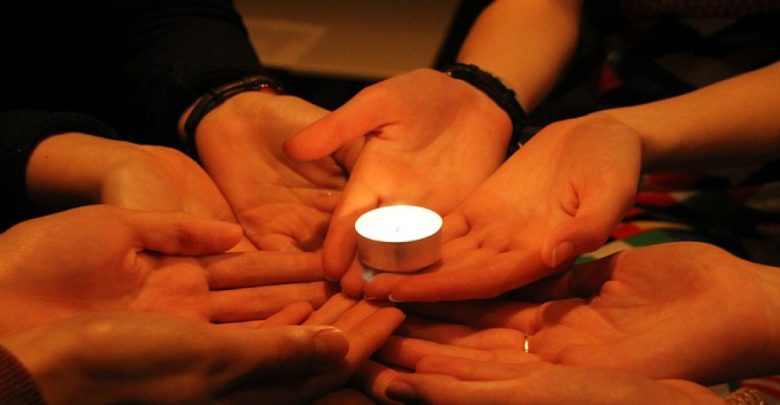The influence of group dynamics in learning

Sometimes it could happen that we are challenged by a group in a training course and the following might happen for different reasons:
1. the content is not coherent with the need of the group,
2. the delivery of the session is not well adapted to the learning style of that group,
3. sometimes we are in a specific phase of group dynamics in which the groups have to challenge the trainer to test the borders and prove that it is growing in the process.
For the point n. 1 and n. 2 you could refer to these following articles:
– Political Correctness and Sensitivity
– Learning and Transfer in my training
– Readiness to constantly adjust the contents and the values of the program to the process of the group
As in this article, we will focus on the point n.3: group dynamics that have an impact on learning processes, challenging trainers and transfer of knowledge.
Why did I choose this tool?
I choose this tool, because it is important as a trainer to be aware of the great influence that the group dimension has on the learning path and that sometimes if we don’t care enough about the group dynamics, we will fail in achieving our learning goals.
How does this apply to be a trainer?
A trainer should be able to create a program flow that can fulfill the needs of the whole group and not only of the individuals. The trainer should be able to read the group dynamics in a way that can be responsive to their feedback and also sometimes to manage a powerful relation within the learning dynamics.
Main content:
Kurt Lewin, a social psychologist, and change management expert is credited with coining the term “group dynamics” in the early 1940s. He noted that people often take on distinct roles and behaviors when they work in a group. “Group dynamics” describes the effects of these roles and behaviors on other group members and on the group as a whole.
More recent researchers have built on Lewin’s ideas, and this work has become central to good management practice.
A group with a positive dynamic is easy to spot. Team members trust one another, they work towards a collective decision, and they hold one another accountable for making things happen. As well as this, it has been found that when a team has a positive dynamic, its members are nearly twice as creative, responsive to learning as an average group.
In a group with poor group dynamics, people’s behavior disrupts work. As a result, the group may not come to any decision or they would not support a positive learning environment that helps in a better cooperative framework and allow people to express their opinion, trust the trainers and to integrate and share content and experiences.
Trainers, learners, and team members can contribute to a negative group dynamic. Let’s look at some of the most common problems that can occur:
- Weak leadership: when a team lacks a strong leader, a more dominant member of the group can often take charge. This can lead to a lack of direction, infighting, or focus on the wrong priorities.
- Excessive deference to authority: this can happen when people want to be seen to agree with a leader, and therefore hold back from expressing their own opinions.
- Blocking: this happens when team members behave in a way that disrupts the flow of information in the group. People can adopt blocking roles such as:
- The aggressor: this person often disagrees with others, or is inappropriately outspoken.
- The denier: this group member is often critical of others’ ideas.
- The withdrawer: this person doesn’t participate in the discussion.
- The recognition seeker: this group member is boastful, or dominates the session.
- The joker: this person introduces humor at inappropriate times.
As a trainer, you play the role of team leader and you need to guide the development of your group and to ensure that the learning objectives will be filled or to adapt the methodology in a way that would be possible to achieve the most of them.
It is very important to learn about the phases that a group goes through as it develops: Bruce Tuckman’s Forming, Storming, Norming, and Performing model, describes these stages. When you understand these, you’ll be able to preempt problems that could arise, including issues with poor group dynamics.
A video that illustrates the phases:
As a trainer, you aim to help your people perform well and to use the group as a source of learning and creativity. To do this, you’ll need to change your approach at each stage.
Follow the steps below to ensure that you’re doing the right thing at the right time:
- Identify from the descriptions above at which stage of team development is your team .
- Now consider what you need to do in order to move towards the performing stage, to understand your role and the ways you can help the team progress.
- Schedule regular reviews at which phase your group is placed and adjust your way of behaving as well as your approach to leadership adequately.
Normally, when the group is challenging you as a trainer is because it is in the “norming phase” that requires to have more time dedicated, not only to transferring knowledge, but also it is time for group dynamics, to go back and refer to the roles inside the groups and in the same time to adjust the methodology for the new stage of the group.
The group needs to move to the level of performing especially when you need to produce some content with the group, when you need to invite them to the participatory phase of the training. In this way, you will provide circumstances for the group to move from a phase in which they depend on you as a trainer to one in which they should find the balance within the group and define their way of work.
Exercises:
How to apply it in everyday life?
- Try to read the group dynamics within your group of peers or the working group: in which phase this group is placed? Which are the indicators that tell you that they are in this specific phase and not in another one?
- Can you recognize in your group of peers the different roles that have been mentioned in the article?
Reflection questions:
- How much am I aware of the importance of group dynamics in my learning delivery?
- Which tool will I use to observe the group dynamics in my groups?
- How much am I able to adapt on what I had prepared, in order to transfer the “why” of the content and not only the ‘’what’’?
- When do I think that there is a need for flexibility in the learning needs, keeping clear the final set of objectives?






